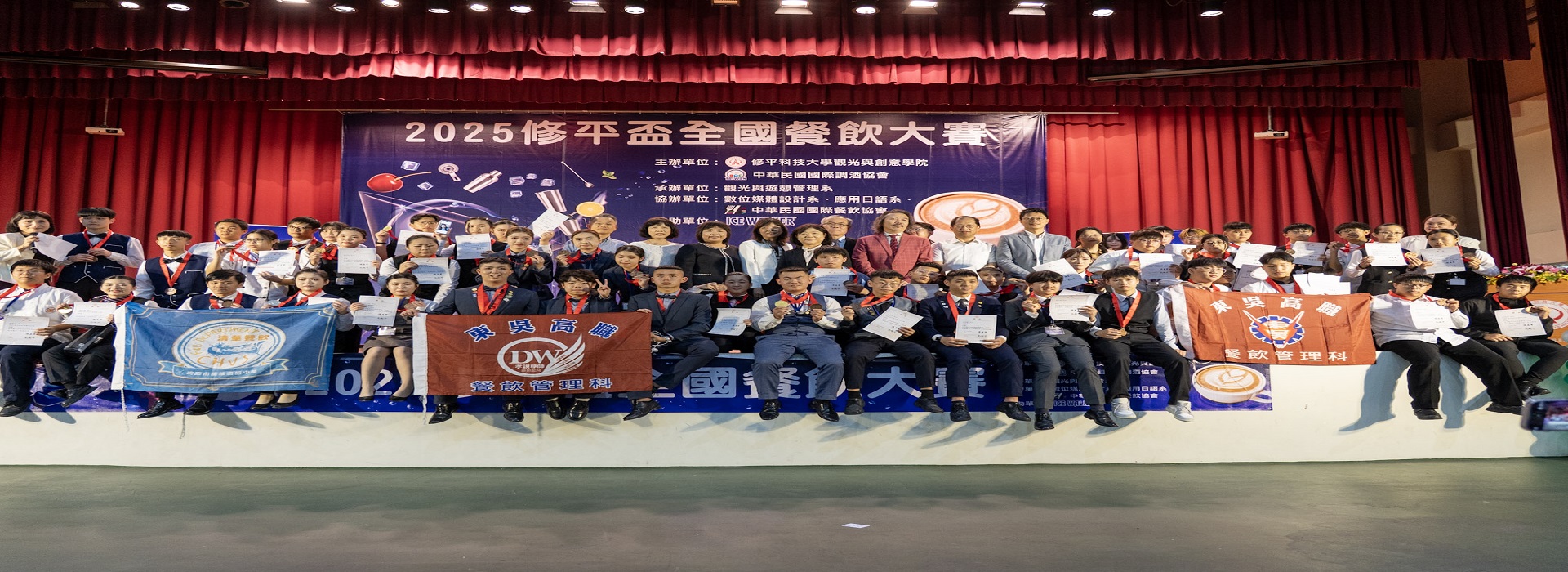


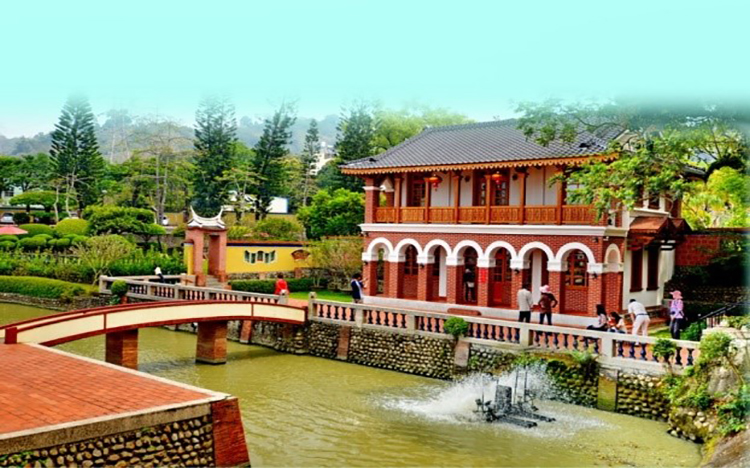
Lin Jiayin, the ancestor of the Wufeng Lin family, from Fujian in the Mainland China , came to Taiwan to reclaim land. He first settled in Daliyu. The Lin Shuangwen incident was affected, and his descendants moved to Amuwu. His descendants, Lin Wencha, assisted to suppress the revolt of the Taiping Heavenly and thus designated as the official of Fujian waterways. After his death in the war, he was conferred as the Prince's Guardian and the house was named as the Palace Guardian House. Lin Chaodong became rich by doing business, and the relationship between government and business was good. Lin Xiantang during the Japanese rule actively supported the Taiwan Parliament petition movement and strongly supported the Taiwan Cultural Association. Wufeng Lin Family House is the general name for the gardens and residence complexes of Wufeng Lin Family in Ayawu (now Wufeng District of Taichung City). It consists of three major parts, namely Dingyu, Xiayu and Laiyuan. Dingyu's famous attractions include Rongjingzhai, Jingxunlou and Yipu. The following attractions include Caojing, Gongbaodi, Dahua Hall, Erfangyao and 28. The attractions of Laiyuan include the iron cannon monument, the Qushe monument, the Laiyuan family stone, the Linzhushan Master Zongde monument, the thirty-six steps, the Lin's ancestral tomb, the stone man, the Lin Yunqing bronze statue, and the Lishe centenary bridge. Originally the largest traditional residential house in Taiwan, the general plan was in the shape of a zigzag, with a total of four forwards and backwards. . In 1999, a major earthquake occurred in Taiwan in 1999, and most of the top hall and the bottom hall were damaged. After the Linjia Mansion and Laiyuan after the 921 Earthquake, with the support of the Administrative Commission for the Reconstruction Promotion Committee of the 921 Earthquake of the Executive Yuan, the Taichung County Cultural Bureau (which has been merged with the Taichung Cultural Bureau) was restored into five parts Reconstruction works. At present, the restoration of Wugui Tower, Jingxun Tower, Yipu, Dahua Hall, Gongbaodi and Erfangyao have all been restored; the grasshopper began to be restored in January 2017 and is expected to be completed in 2019. Laiyuan, located in Mingtai Middle School, can be visited freely, and Xiayu can be reserved online. Only some of the top schools adopt group appointments. -------------------------------------------------------------------- 霧峰林家先祖林甲寅自大陸福建來台開墾,最早落腳於大里杙,林爽文事件遭受牽累,後代遷至阿罩霧。子孫林文察曾於清朝協助評定太平天國官拜福建水路提督,戰死後又被加封為太子少保,宅第被封為公保第。林朝棟經商致富,政商關係良好。林獻堂玉日治時期積極支持台灣議會請願運動,大力支助台灣文化協會。 霧峰林家宅園是霧峰林家在阿罩霧(今臺中市霧峰區)的園林與宅邸建築群的總稱,由頂厝、下厝及萊園等三大部分組成。頂厝著名景點包含有蓉鏡齋、景薰樓、頤圃。下厝景點有草厝、宮保第、大花廳、二房厝與二十八間。萊園的景點包含有鐵砲碑、櫟社名碑、萊園一家石、林竹山夫子頌德碑、三十六台階、林氏祖塋、石頭公、林允卿銅像、櫟社百週年紀念橋。 原是台灣規模最大的傳統民居宅第,總平面呈回字形,前後共有四進。西元1999年臺灣發生九二一大地震,頂厝、下厝,大花廳及萊園大半受損。林家宅邸與萊園歷經921大地震後,在行政院九二一震災災後重建推動委員會的經費支持下,由臺中縣文化局(已與臺中市文化局合併)分成五個部份進行復原重建工程。目前五桂樓、景薰樓、頤圃、大花廳、宮保第、二房厝,皆已完成修復;草厝於2017年1月開始修復,預計2019年完成。位於明台中學內的萊園可自由參觀,而下厝可上網預約,僅頂厝部分採團體預約方式。 -------------------------------------------------------------------- 霧峰林家先祖林甲寅(リン・カガ)は中国福建省から台湾に移住した、最初に大里杙(ダリ)に足を落とした、「林爽文」(リン・シュアンウェン)事件が苦しんだ、子孫が阿罩霧リン・シェン・ホールに移転する。子孫林文察(リン・ウェンツァ)は、かつて清朝に平定太平天国の官、福建省水路のを援助した。戦死後、太子小保に封じられ、家が公保に封じられた。林朝棟(リン・チャオドン)はビジネスで豊かになり、政治とビジネスの関係は良好です。日治時代の時、林獻堂(リン・シェン・タン)は台湾議会請願運動を積極的に支援し、台湾文化協会を強力に支援しました。 霧峰林家住宅園は、霧峰林家が阿罩霧リン・シェン・ホール(現台中市霧峰区)の庭園と邸宅の複合体の総称で、頂厝、下厝、萊園(ラェエン)の3つの主要部分で構成されています。頂厝の有名な観光スポットには、蓉鏡齋、景薰樓、頤圃があります。下厝の観光スポットには、草厝、宮保第、大花廳(大花ホール)、二房厝、二十八間があります。 萊園(ラェエン)の観光スポットには、鉄の大砲の石碑、櫟社名碑、萊園(ライユアン)の石、林竹山夫子頌德碑、36段、林家先祖の墓地、石頭公(ストーン・ゴン)、林允卿(リン・ユンチン)の銅像、櫟社の百年記念橋があります。 もともとは台湾最大の伝統的な民家で、総平面は正方形です、その前後に4つの入口があります。 1999年に台湾で921地震が発生しました、頂厝、下厝、大花廳(大花ホール)、萊園(ラェエン)が大部分が被害を受けました。921地震後、林家宅園(リンジア ハウス)と萊園(ライユアン)は、921地震復興推進委員会の資金支援を受けて、台中郡文化局(台中市文化局と合併)が5つの部分に分かれて復興工事を行う。今まで五桂樓(ファイブ・クワイ・ハウス)、景勝地、頤圃、大花廳(大花ホール)、宮保第、二房厝は修復されたし、2017年1月に草厝が修復され、2019年に完成する予定です。明台中学の萊園(ライユアン)は自由に見学できる、下厝はインターネットで予約でき、頂厝の一部のグループ予約方法のみ利用可能です。
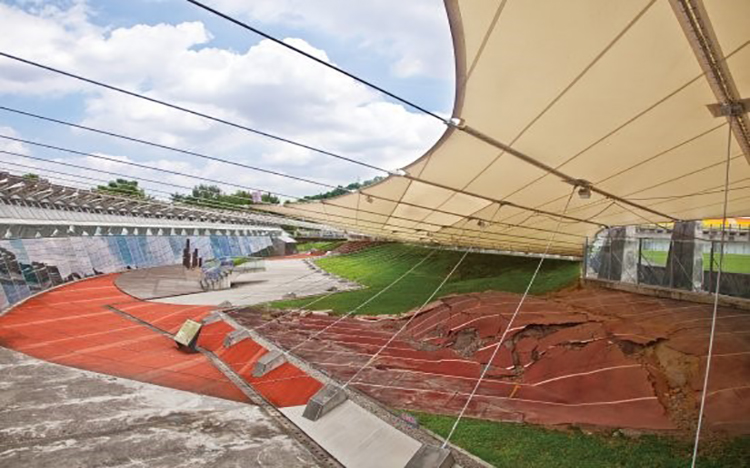
At 1:47 on the morning of September 21, 1999, a 7.3 magnitude Richter scale earthquake occurred in central Taiwan, causing casualties and property damage. It is one of the largest earthquake disasters in Taiwan in the past century. To remind the public to pay attention to earthquake prevention and relief measures, the government and scholars and experts believe that the geomorphology of plate movment, school buildings, and riverbed uplifts in the base of Wufeng Township's Guangfu Junior School has the most notable features of earthquake among several candidate sites. The landform was preserved after the earthquake. It is convenient for the restoration of the current site of the Guangfu Junior School. It is planned to rebuild the "Earthquake Memorial Museum" to preserve the original site of the earthquake, record the historical facts of the earthquake, and provide live teaching materials on earthquake education for the public and schools. An Earthquake Education Park "to highlight its commemorative and educational significance. ------------------------------------------------------------------- 1999年9月21日清晨1時47分,台灣中部發生芮氏規模7.3的強烈地震,造成的傷亡及財物損失為近百年來臺灣最大的地震災害之一。 為提醒大眾重視防震及救災措施,九二一地震發生後,政府及學者專家認為霧峰鄉光復國中基地中的斷層錯動、校舍倒塌、河床隆起等地貌,在幾個候選地點中條件最好震後地貌保存完整。便於光復國中現址,規劃改建「地震紀念博物館」,以保存地震原址、記錄地震史實,並提供社會大眾及學校有關地震教育之活教材,後於2001年2月13日正式定名為「九二一地震教育園區」,以彰顯其紀念及教育意義。 ------------------------------------------------------------------- 1999年9月21日早朝1時47分、台湾中部でマグニチュード7.3の強い地震が発生し、過去100年間に台湾最大の地震災害の1つとなった。 地震対策と災害対策に注意を喚起するために、921地震後、政府や学者は、霧峰鄉の光復中学基地内の断層がずれ、校舎倒壊、河川敷隆起などの地形、いくつかの候補地では、地震後の地形がそのまま残るのが最善です。光復中学の場所、地震記念博物館を改築し、地震の跡地を保存し、地震史を記録する計画です、地震教育に関する一般市民や学校のための生きた教材の提供、その後、2001年2月13日に「9月21日地震教育公園」と正式に名称を確定、その記念と教育的意義を示すために。
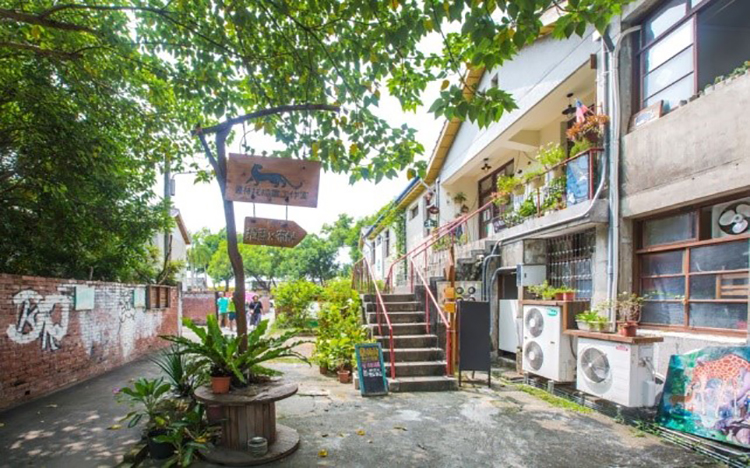
Guangfu Xincun is located in Kengkou, Wufeng District, Taichung City, Taiwan. Its history can be traced back to the early 1950s. The Republic of China government ,which retreated to Taiwan, promoted the "Evacuation Plan" in order to prevent government agencies from being destroyed during the war. The provincial government moved to central Taiwan. Guangfu New Village, established in Wufeng in 1956, became the first new town in Taiwan after the war. As a dormitory for employees of the provincial government, the Zhongxing New Village was established in Nantou the following year. After the 921 earthquake and the province, residents moved out in the 2000s. In January 2012, Taichung City Government Cultural Bureau designated the registration as a "cultural landscape". The area of 9.8 hectares was approved in September of the same year. It was the first cultural landscape of Taichung City. In 2014, the Taichung City Government began to implement the "Star Picking and Entrepreneurship Base" program, gradually repairing houses, and gradually introduced composite theme cultural and creative industries to counsel young people to set up businesses. ------------------------------------------------------------------- 光復新村位於臺灣台中市霧峰區坑口里,其歷史可追溯到1950年代初期,退守台灣的中華民國政府,為了防止戰爭時一次就將政府機關摧毀,因此推動「疏遷計畫」,把台灣省政府遷到臺灣中部。1956年於霧峰建立的光復新村成為戰後台灣第一個新市鎮,作為省府員工之宿舍,次年於南投市建立中興新村。 歷經921地震與精省後,住戶於2000年代陸續遷出。2012年1月,台中市政府文化局指定為「文化景觀」登錄,該區面積9.8公頃,並於同年9月通過公告,是臺中市第一個文化景觀。2014年,台中市政府開始執行「摘星創業基地」計畫,逐步修繕房舍,陸續引入複合式主題文化創意產業,輔導青年進駐創業。 ------------------------------------------------------------------- 光復新村は台湾台中霧峰のピットロある、歴史は1950年代初頭にさかのぼる、台湾の中華民国政府を退却させ、戦争時に政府機関を一度破壊するのを防ぐため、台湾政府を台湾中部に移転する「避難計画」を推進した。 1956年に霧峰に設立された光復新村は、戦後台湾最初の新しい町となり、省職員の宿舎として、翌年南投市に中興新村を設立した。 921地震後、居住者は2000年代に移住しました。 2012年1月、台中市文化局が「文化景観」として指定、面積は9.8ヘクタールの面積、同年9月に発表され、台中市初の文化的景観となりました。 2014年、台中市政府は「摘星起業拠点」実施を開始し、徐々に建物を修復し、複合テーマ文化創造産業を導入し、若者を起業に指導しました。
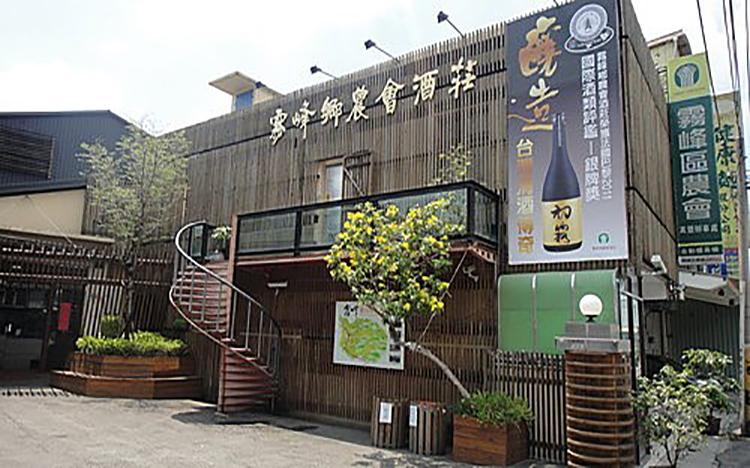
The Wufeng District Farmers' Association began to coach farmers to succeed in planting "Tainong 71" fragrant rice, and won the national championship rice and ten classic good rice. Contribution, named this dreamy rice "Yi Quan Fragrant Rice". In 1994, the Agricultural Committee of the Executive Yuan guided the establishment of a winery in the Wufeng District Farmers' Association. In order to increase the added value of Yiquan fragrant rice, Wuwufeng District Farmers Association created Wufeng as the hometown of fragrant rice, created the fragrant rice cultural and creative industry, and went to Japan to conduct experiments on fragrant rice brewing sake. The most dreamy and highest-grade sake; the natural gift of Wufeng's beautiful countryside. "Read ・ Coffee", outdoor performance areas, etc., full of Japanese style, elegant and beautiful, the perfect blend of fragrant rice culture and sake flavor, the winery retains precious local rural cultural assets-old rice hulling machine and other rice processing equipment, has experience farm Fun, culture, education, wine tasting intellectual tour charm, Taiwan's first Japanese aesthetic wine collection. ------------------------------------------------------------------- 霧峰區農會於九十一年起,開始輔導農民栽種「台農七十一號」香米成功,更榮獲全國總冠軍米及十大經典好米等殊榮.為感念農試所郭益全博士的貢獻,特將這夢幻的米命名為「益全香米」。 行政院農業委員會於九十四年度輔導霧峰區農會成立酒莊,改造活化閒置的萬豐舊谷倉,闢設香米米藏、清酒酒藏(釀酒坊)及「萬豐穀倉-清酒・霧峰區農會為提高益全香米的附加價值,營造霧峰成為香米的故鄉,開創香米文化創意產業,特地遠赴日本進行香米釀造清酒試驗,成功以香米釀造出台灣最夢幻、最高級的清酒;霧峰美麗鄉土孕育的自然恩賜。 「閱讀・咖啡」、戶外展演區等,充滿和風清味,典雅美麗,將香米文化與清酒韻味完美融合,酒莊更保留珍貴地方農村文化資產─舊礱谷機等稻米加工設備,具有體驗農趣、文化、教育、品酒知性之旅魅力,是台灣第一座日式美學酒藏。 ------------------------------------------------------------------- 霧峰区は2002年から農民を指導し「台農七十一號米」をた植えました。その結果は大成功です。全国の試合で勝利しました。そしてトップ10クラシック米の最高栄譽稱號を獲得しました。郭益全の努力に感謝するために特にこの米を「益全香米」と呼びます。行政院農業委員会は九十四年度に霧峰区農会を補佐して酒糟(さけかす)を成立して、 放置(ほうち)していた旧万豊納屋を改造活化して、香米米蔵、サケ酒蔵(醸造所(じょうぞうしょ)) 及び「万豊納屋ーサケ・霧峰区農会を設置した。益全香米の価値を上げるため、霧峰を営む香米の故鄉になる。香米文化創意產業を開創、特別に日本に行って香米清酒を醸成するの試験を進行する。香米で台湾の最も夢幻、最高級の清酒のような醸造に成功だ。霧峰の美しい郷土に自然の恩賜を孕む。 「閲読、コーヒー」、室外の展示など、和風の味だし、悠雅だし、綺麗香米の文化とお酒に完璧に合う。 ワイナリーは地元の文化財を保持するためにより貴重です、「舊襲谷機」と米の加工設備、農業の趣味、文化、教育、お酒、知性の旅行の魅力が持つ、台灣一番目の日本風美學酒藏。
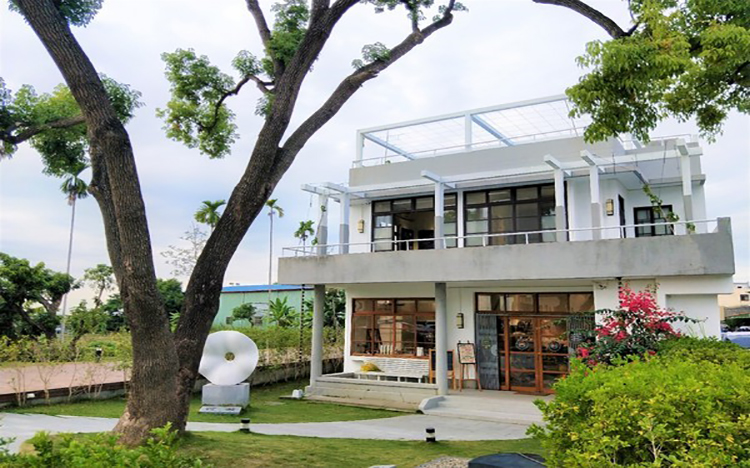
An abandoned old house next to the Nonghui Winery in Wufeng District, Taichung City was originally a "people's livelihood clinic" and former residence of the deceased physician "Afei Xianzi" Lin Pengfei. After the peasant association bought it, it has the common memory of the Wufeng people. It took two years to build it into the "Wufeng People's Livelihood Story Museum". In addition to exhibiting the history related to Wufeng and introducing the life of outstanding people, Combined with agriculture, it not only holds a farmers market every week, but also becomes a very educational "agricultural canteen" Under the research and arrangement of the Wufeng Peasant Association team, the old clinic, the old sofa on the first floor, the gramophone, and the concrete stairs on the second floor seem to make people walk into the tunnel of time; the clinic of Afei Xianzi is reproduced in the original , Even injections, scissors and wall charts on the wall are in sight. "Mist Peak, People's Livelihood, Story House" not only has local historical stories, but also for the promotion of food education, there is also an "Agriculture Canteen" on the back of the first floor. Some of the ingredients eaten here come from the Story House. The crops planted by natural farming methods are not only fresh and natural, but also truly "from the place of production to the dining table", so that people have a deeper understanding of agriculture. At the same time, it also combines rural education experience, farmers' market, agricultural lectures and other activities to provide people with the opportunity to contact and recognize agriculture, allowing participants to see Taiwan ’s agricultural issues and agricultural diversified development, and re-interpret all kinds of agriculture from an innovative perspective Elements, through diverse and experimental activities, let participants feel the close connection between agriculture and life. ------------------------------------------------------------------- 台中市霧峰區農會酒莊旁的一座荒廢老宅,原本是已過世醫師「阿飛仙仔」林鵬飛的「民生診所」和故居。農會買下它後,以它深具霧峰人共同的記憶,歷時兩年,將其打造成「霧峰民生故事館」,除了展出和霧峰相關的歷史、介紹傑出人物生平,也和農業結合,不僅每周舉辦農夫市集,也成為極具教育意義的「農學食堂」。 老診所在霧峰農會團隊考據、佈置下,一樓的老沙發、留聲機和上二樓的水泥樓梯,彷彿令人走入時光隧道;阿飛仙仔的看診處更是原汁重現,連打針的針劑、剪刀和牆上的骨骼掛圖都映入眼簾。 「霧峰‧民生‧故事館」不僅具在地歷史故事,為導入食農教育的推展,在一樓後側還佈置了「農學食堂」,在這兒吃到的食材,就有部分出自故事館旁以自然農法栽種的農作物,不僅新鮮、自然,還真正做到「從產地到餐桌」,讓民眾對農業有更深一層的認識。同時也結合農村教育體驗、農夫市集、農業講堂等活動,提供民眾接觸與體認農業的機會,讓參與者看見台灣農業議題以及農業多元發展,以創新的角度,重新詮釋各式各樣農業元素,透過多樣性且富有實驗性的活動,讓參與者感受農業與的生活的緊密連結。 ------------------------------------------------------------------- 台中霧峰農会酒荘のそばにある廃墟になった古い屋敷は元々亡くなられた医師「阿飛仙仔」・林 鵬飛氏の「民生診療所」の故宅である。農会がそれを買った後 それは霧峰人にとって意味深 2年間続いた 霧峰民生故事館に構築します。そして霧峰について歴史を展示してその人物を紹介します。農夫と協力だけでなく毎週農夫市場がありますので教育意味深になっての「農学食堂」。 老診所は霧峰農會團隊がしつらえた後、一階の古いソファー、レコードプレヤーと二階に登るセメントの階段はまるでタイムトンネルのようだ。阿飛仙仔の審査室は昔のまま再現され、注射の注射器、はさみ、壁にかけてるこっかくなども目に映る。 霧峰民生故事館は地元の歴史物語が持ってだけでなく、食品農業教育の広げを導入しました、一階後ろの側に「農學食堂」を設置しました、ここで食材を食べました、その中の一部が故事館のそばから、自然的農業の方で栽培しました、新鮮で自然でだけではなく、「產地からテーブルまで、民衆に更に了解しました。 同時に農村教育體驗、農夫の市場、農夫講座活動などを結びました。民衆に農業体験と認識のチャンスを提供しました。參加者に台灣農業議題と農業多元發展を見ました。新しい角度で改まで様々な農業元素を解明しました、多樣性と呎山實驗性の活動を通して參加者に農業と生活のしっかりした結びを実感しました。
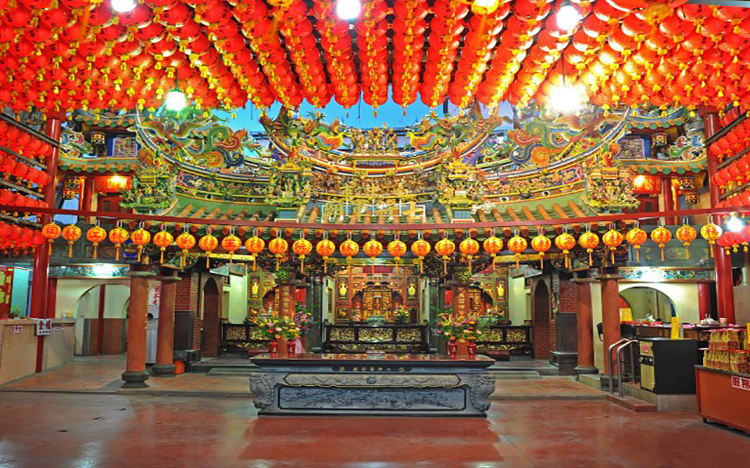
It is said that in the 9th year of Tongzhi (1870 AD), the Dali General General Headquarters sent six soldiers to patrol the area of Ayaowu (now Wufeng). During the execution of the task, they were surrounded by people from Ayaowu and Caozhifan , but outnumbered and killed. Among them, the patrol dog ran back to the headquarters to bark, it was too late for the headquarters to send people to rescue, and the patrol dog bit his tongue and committed suicide. The villagers felt that the seven righteous men often blessed the people, so they raised funds to build a temple sacrifice and named it "Zhongyi Temple Seven Generals Temple". Every year, the fifth day of the lunar calendar is the Day of the Seven Generals Temple, and it is the festival day. The Seven Generals Temple is so prestigious that if you look for lost things, you will find them. ------------------------------------------------------------------- 傳說同治九年(西元1870) ,大里杙總兵部派六名士兵赴阿罩霧(現今的霧峰)巡防地方,在執行任務時被阿罩霧出草支番人包圍,六人雖奮勇應戰,但寡不敵眾全被殺害身亡。當中一同帶去的義犬奔回總部狂吠,總部派人前往援救卻為時已晚,而義犬則咬舌自盡。 鄉民有感於七義士常顯靈庇佑百姓,因此集資建廟祭祀,以『忠義祠七將軍廟』命名。每年農曆七月五日是七義士的忌日,為祭典日。七將軍廟神威顯赫,如尋找失物,必能尋獲。 ------------------------------------------------------------------- うわさによると、同治九年(西元1870)大里杙総合部総武は阿罩霧(現在の霧峰)のパトロール場所に六名の兵士を送った、任務を実行するとき、阿罩霧出草支の番人に囲まれて、兵士は一生懸命戦いましたが、数が多いので全員殺されました。中で一緒に連れて来た犬は本部に走りながら吠えをします、本部は救援に行ったとき、もう手遅れだ、犬は舌をかんで死んだ。 町民はセブンイ-シがよく現れて、民を加護するので、お金を集まって「忠義祠七將軍廟」という廟を建てました。毎年の陽歴七月五日はセブンイ-シの忌日です、お祭りの日です。七將軍廟はすごいです、例えば、失物を探すとき、必ず探します。

It was originally a meeting place for the Baozheng Zhengzheng during the Japanese occupation period. It was built in 1929, and it was provided by the household administration office after the restoration (1945). In 1999, in accordance with the reconstruction plan of the old streets of Daliyu, it was changed to Daliyu Industry Cultural Museum to collect many local cultural relics. The exterior of the culture hall is a house made of bricks, and a four-sided inclined roof covered with gray and black wenwa, which attracts the attention of passersby. The museum presents Dali's literature and agricultural equipment used in the early days, and displays related historical materials such as Daliyu Old Street. ------------------------------------------------------------------- 原為日據時期大里杙保正集會場所,建於1929年,光復後(1945年)提供戶政事務所使用,後為大新社區活動中心。1999年配合大里杙老街風貌再造計畫,改為大里杙產業文化館,收藏許多當地的文物。 文化館的外觀為清水磚造的屋身,與鋪著灰黑文瓦的四面斜屋頂,很吸引路人的目光。館內呈現大里的文獻和早期所使用的農業器具,並常態性展出大里杙老街等相關史料。 ------------------------------------------------------------------- 元々は日據時代の大里杙保正の集會場所、1929年に建て変えられました。1945年、台湾光復後、戶政事物所(現在の市役所)になり、その後、大新社區活動中心(市民会館)に変わりました。1999年の大里杙の老街風貌再造計畫(街づくりに関するプログラム)に伴い、大里杙產業文化館として使われてきています。また、中には地元に関する物がたくさん収蔵されているそうです。 文化館の外観は清水レンガ造りの壁です、グレーと黒の瓦が付いた四方傾斜の屋根が旅人の目線を引きます。 館內プレゼン大里の文献と初期の農業器具ガ使用する、大里杙古い街並みなどの関連する歴史資料を定期的に展示しています。

There is a large banyan tree at the end of Dali Old Street. The shape of the banyan tree is upside down, which means that the banyan tree will be planted upside down so that the banyan tree will not grow quickly, but it will grow into branches and leaves, which has the meaning of a sheltered place. The current status of the retro-banyan tree is not only the site of the old dock, but also the continuous flow of boats and merchant ships during the bustling past. The frequent trade exchanges have led to the prosperity of the old streets. Later, under the influence of river diversions and port sedimentation, the raft stopped. Although Dali Old Street has undergone various changes, the inverted banyan tree still stands at the end of Dali Old Street. ------------------------------------------------------------------- 大里老街盡頭有一株大榕樹,榕樹的形狀呈倒栽狀,意即將榕樹之倒插種植,讓榕樹不會很快長高,但會長成枝葉,有庇蔭地方的意涵。倒栽榕的現狀,既為昔日的碼頭遺址,過去繁華時舟筏、商船絡繹不絕,貿易往來頻繁,帶動老街的昌盛興起。後來河川改道、港口泥沙淤積的影響下,舟筏停駛。 儘管大里老街經過各種轉變,但倒栽榕樹仍屹立不搖的聳立於大里老街的盡頭。 ------------------------------------------------------------------- 大里老街最後に大きながジュマルの木があります、大きながジュマルの形が逆になっている、それは大きながジュマルの木を植えることを意味し、がジュマルの木はそれほど速く成長しません、しかし、ジュマルは葉に成長し、避難所の意味を持ちます。逆さまで植えられた木のままのような今の様子。それは昔の波止場。賑やかな時舟の筏、商船が途絶えることのない、頻繁な取引、繁盛を率いている、昔のような町。のちで河川の流れが変更となって、港に泥が積み上げたりの影響を受けて、舟の筏が動かなくなったのだ。古い町 大里はどんな各種の転換を経ても、逆さまで植えられている木は、依然として揺るぎないものとして、古い町、大里の隅っこに聳立しています。